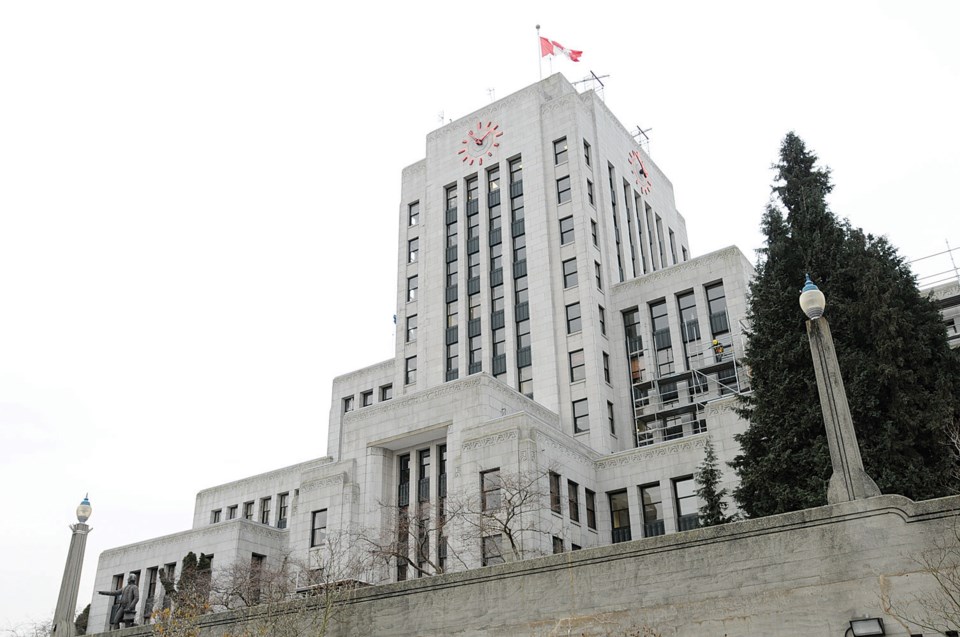While Mayor Gregor Robertson goes on endlessly about the need to provide affordable housing, the benefits of densification and the cultural value of maintaining heritage property, guess what — senior planners at the city are slamming the door on a long-standing program that has successfully managed to deliver all that.
The program is called the Heritage Revitalization Agreement, or HRA. It is described on the City of Vancouver’s website as a “powerful and flexible” tool.
Here’s how it works. First the owner of a heritage building applies to the city to have a heritage designation put on the title of the property.
That designation means the building can’t be torn down even if it is sold. That significantly reduces the property value.
Next, in exchange, the city sets aside zoning density restrictions on the property to compensate the owner, usually by allowing “in fill” housing. And that is what has been taking place for many years now, particularly in Mount Pleasant, RT5 or duplex zoned land. Property owners of heritage homes have agreed to a heritage designation on their land title in exchange for being able to build a coach house as “in-fill” on their property.
Unlike laneway houses, which can be up to 600 square feet and are not really suitable for families, coach houses tend to be around 1,200 square feet and family friendly.
You get heritage preservation, increased density and affordable housing. Everyone wins.
But it takes time.
Consider what Tom Fowle has been through. Thanks to a series of emails and correspondence with the city, we know that Fowle has been in the line to build a coach house for more than two years.
The plan is to provide housing for his son — who incidentally is a city hall employee — his daughter-in-law, and their two kids. They otherwise couldn’t afford to live in the city.
Fowle tells me he has already spent $50,000 in this process. But as his architect Graham Elvidge says, he was all but certain Fowle would succeed. Four years earlier and one block away, one of Elvidge’s clients in the same circumstance managed to negotiate the same agreement with the city.
And as I thumb through the stack of emails between the city and Fowle or Elvidge, there is nothing but indications of progress. Sept. 11, 2015: “The request for Legal Services to prepare by-laws and heritage agreement has been made.” And “planning is in support.”
On Dec. 3, 2015: the heritage application is moving forward to the planning departments city’s Heritage Review Meeting. “We have rescheduled this project for next week’s Design Review.” And so on.
Then, two weeks ago, there was a call from city planner Hugh McLean with the heritage group and the author of many of the emails, to tell Fowle, the deal was off. Period. No explanation by my deadline.
Two years, $50,000 and nothing different than what had been approved in any number of RT5 properties within two blocks.
My call to McLean to seek an explanation resulted in this comment: “You have to go through communications for something like this.” Spare me.
By the way, Fowle and Elvidge aren’t the only ones who have run into this road block. Other architects and builders tell me they have “a number of clients” who have been shut out.
And, off the record of course, they lay this sudden change in practice at the feet of the assistant director of urban design Anita Molaro.
I left Molaro a voice message, at her request, with Fowle’s address and a general question about the HRA policy so she could check it out.
I got her voice mail response, which did not refer to Fowle’s project but she did say there have been “no changes” in RT5 zoning and in-fill was allowed “when an existing building was already on the heritage registry.” Now, to be kind, that is a bit disingenuous. Getting a heritage designation and being granted extra density for in-fill has, according to people in the business, been all part of the same deal.
So I still don’t know why the change to thwart the city’s goals regarding heritage preservation, density and affordable housing. I do suspect, however, that as I write this city councillors don’t have a clue this change has taken place.
@allengarr



